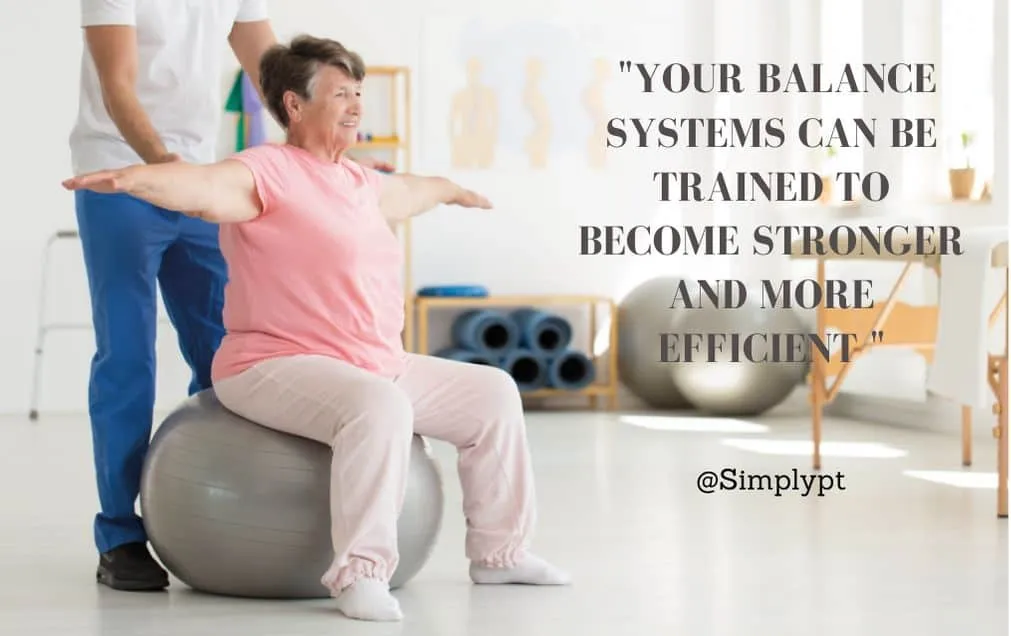Do you or do you have a loved one who has fallen recently? Or maybe balance has become more unsteady?
Did you know that:
1 in 4 adults older than 65 fall each year
95% of hip fractures are caused by a sideways fall
1 in 5 people who fracture their hip from a fall do not live past the first year after the injury
An older adult dies from a fall every 19 seconds
To better understand why your balance can change and how to maintain good balance to avoid falls, stay independent, and live the life that you want to live!
For most of our lives, maintaining balance while walking, running, and bending over to pick up something from the floor is as simple as blinking our eyes and taking a breath. You likely haven’t given it much thought until…you notice you feel off balance while getting dressed, stepping into the shower or your car, or you are needing a handrail while going upstairs.
If you can relate to this, then I’m sure you have wondered what might be causing your unsteadiness and what can you do to make sure that you can maintain your balance, avoid falling down, and stay independent with all the things that keep you active, healthy, and happy in your everyday life.
As a physical therapist, we work with people everyday that are noticing changes in their balance and wanting to make sure that they are doing what they need to do to avoid falling and getting hurt. Just as a muscle can get weak, your balance systems can also become “weak” and not function as well. Similarly, just as a muscle can regain strength, flexibility and function with an appropriate exercise program, you can also strengthen and improve the function of your balance systems.
What makes up our balance system?
There are 3 systems that determine if we are going to be able to maintain our balance when our balance is challenged. Some of these challenges include when there is a change in surface while walking, when supporting ourselves with one leg while taking a step, or when we hear a loud noise and have to turn around quickly.
These three systems are your somatosensory system, vestibular system, and visual system.
“Somata… what?” you say.
The somatosensory system is the primary balance system that is made up of nerve endings found in muscles and bones that communicate to the brain about how our bodies are positioned and/or moving. An area in the brain processes this information and communicates back to the appropriate muscles in order for you to maintain an upright position when your joints and muscles change position.
The second system, the vestibular system, includes the central nervous system and the inner ear. Many of you may have “experienced” your vestibular system more directly if you have had vertigo. The vestibular system tells your brain where your head is in space and alerts the brain when the head moves quickly.
Lastly, the visual system of course tells your brain what the body should expect from your external environment.
Similarly to the somatosensory system, the vestibular and visual systems alert the brain when there has been a change in position of your body or your surroundings, so that it can respond best to keep you from falling. These systems are always working and they work very closely together. You can see that even within one of these systems, there are alot of critical pieces and one little thing, such as loss of sensation in part of your foot or diminished eyesight, could impact the whole balance system.
Do not fear. As mentioned before, the balance systems can be trained to become stronger and more efficient. Physical therapists can help identify what part of your balance system is compromised and develop an individualized program to improve its function so that you can avoid falls and perform all your daily activities with confidence.
Do you know somebody who is:
Frustrated with Bad Balance and Wobbly Legs?
Fallen in the past?
Afraid of falling?
Balance become more unsteady?
Worried about your parents (or yourself) falling and/or living independently?
Starting to AVOID activities you love because you feel unsteady and fearful?
Would you like to understand which of your 3 balance systems is “off” and more importantly- HOW TO FIX IT?
If so- you may be eligible for a free balance consultation… Simply give us a call or text at (865) 351-3759 we will get back to you as soon as possible.



